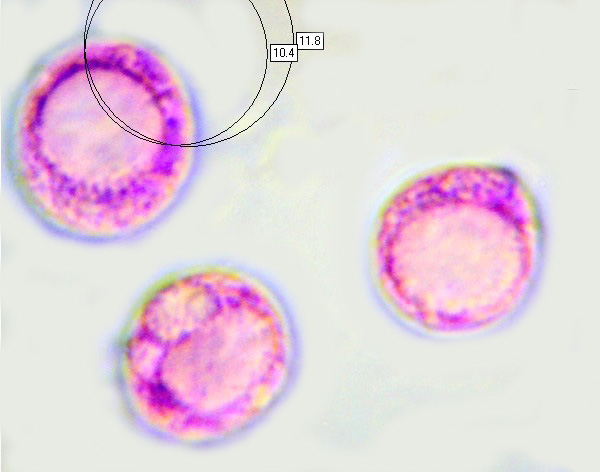Amanita battarrae (Boud.) Bon - Banded Amanita
Phylum: Basidiomycota - Class: Agaricomycetes - Order: Agaricales - Family: Amanitaceae
Distribution - Taxonomic History - Etymology - Identification - Culinary Notes - Reference Sources
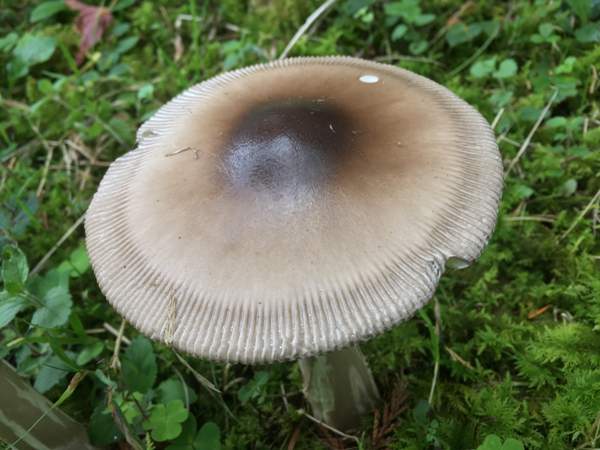
This rare mushroom is distinguished from other ringless Amanita species (often referred to as grisettes) by the zoned colouring of its marginally-grooved cap.
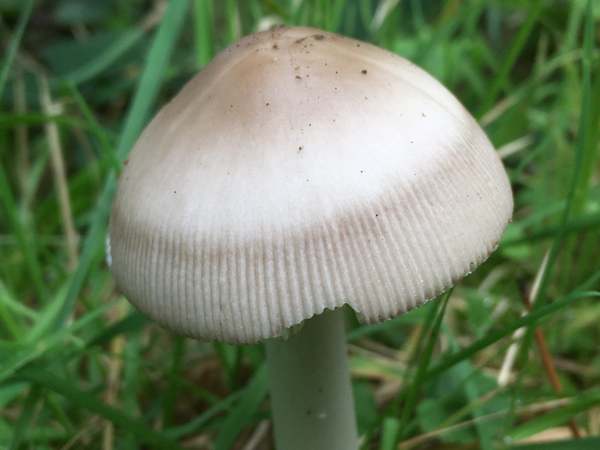
For a detailed description of the Amanita genus and identification of common species see our Simple Amanita Key...
Distribution
A rare sight in Britain and Ireland, Amanita battarrae is found throughout most of mainland Europe. A very similar species occurs in some parts of North America.
Taxonomic history
Described in 1902 by the French mycologist Jean Louis Émile Boudier, who named it Amanitopsis battarrae, this rare mushroom was given its currently-accepted scientific name in 1985 by the famous French mycologist Marcel Bon (1925 - 2014). In the interrim this mycorrhizal woodland mushroom was considered by many mycologists to be a variety of either Amanita vaginata or Amanita inaurata (Amanita ceciliae).
Synonyms of Amanita battarrae include Amanitopsis battarrae Boud., and Amanita umbrinolutea (Secr. ex Gillet) Bataille.
Etymology
The specific epithet battarrae honours Italian priest and naturalist Giovanni Antonio Battarra (1714 - 1789). Some people refer to this species as the Grey-zoned Ringless Amanita. The 2019 edition British Mycological Society's list of English Names of Fungi uses the common name Banded Amanita.
Identification guide
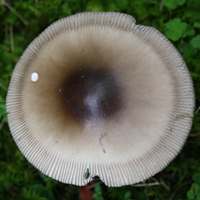 |
Cap5 to 12cm diameter; various shades of grey-brown with a centre that becomes gradually darker as the fruitbody matures; occasionally with velar fragments when young. The cap is Initially egg-shaped and then convex, eventually flattening but retaining a shallow umbo; strongly lined at the margin, usually with a narrow dark band where the striations commence. |
GillsThe gills of Amanita battarrae are creamy white, crowded, free or occasionally weakly adnexed. As with other grisettes, there are often a few short gills, of variable length and irregularly distributed. |
|
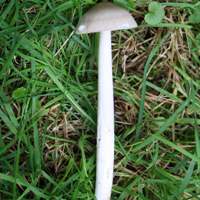 |
StemStems of this rare grisette are usually 7 to 15cm long and 0.8 to 1.8cm in diameter, tapering (narrower at the top); white and covered in fine woolly grey-brown scales; clavate but not bulbous at the base. As with the other grisettes there is no ring on the stem, but at the base of the stipe there is a white sac-like persistent volva with ooarge-brown spots, which is sometimes buried below ground level or in leaf litter. The stem flesh is whitish. |
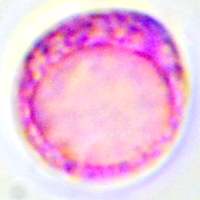 |
SporesGlobose, smooth, 11-13µm; inamyloid.
Spore printWhite. |
Odour/taste |
No significant odour; mild, pleasant taste. |
Habitat & Ecological role |
Mycorhizal with hardwood trees, particularly oaks but also Ash and Hazel; occasionally also in coniferous woodland. |
Season |
July to October in Britain and Ireland. |
Similar species |
Amanita vaginata has a grey-brown cap without significant zones; its stem is smooth and featureless. Amanita fulva has a tawny-orange cap and white gills; its stem is smooth and featureless. |
Culinary Notes
Concerns have been expressed that Amanita battarrea may be toxic, but in any case this is a rare mushroom about whose edibility little is known. My advice is that it should not be gathered for eating.
Reference Sources
Fascinated by Fungi, 2nd Edition, Pat O'Reilly 2016, reprinted by Coch-y-bonddu Books in 2022.
BMS List of English Names for Fungi
Geoffrey Kibby, (2012) Genus Amanita in Great Britain, self-published monograph.
Funga Nordica: 2nd edition 2012. Edited by Knudsen, H. & Vesterholt, J. ISBN 9788798396130
Paul M. Kirk, Paul F. Cannon, David W. Minter and J. A. Stalpers (2008). Dictionary of the Fungi; CABI
Taxonomic history and synonym information on these pages is drawn from many sources but in particular from the British Mycological Society's GB Checklist of Fungi.
Acknowledgements
This page includes pictures kindly contributed by Simon Harding.
Fascinated by Fungi. Back by popular demand, Pat O'Reilly's best-selling 450-page hardback book is available now. The latest second edition was republished with a sparkling new cover design in September 2022 by Coch-y-Bonddu Books. Full details and copies are available from the publisher's online bookshop...

